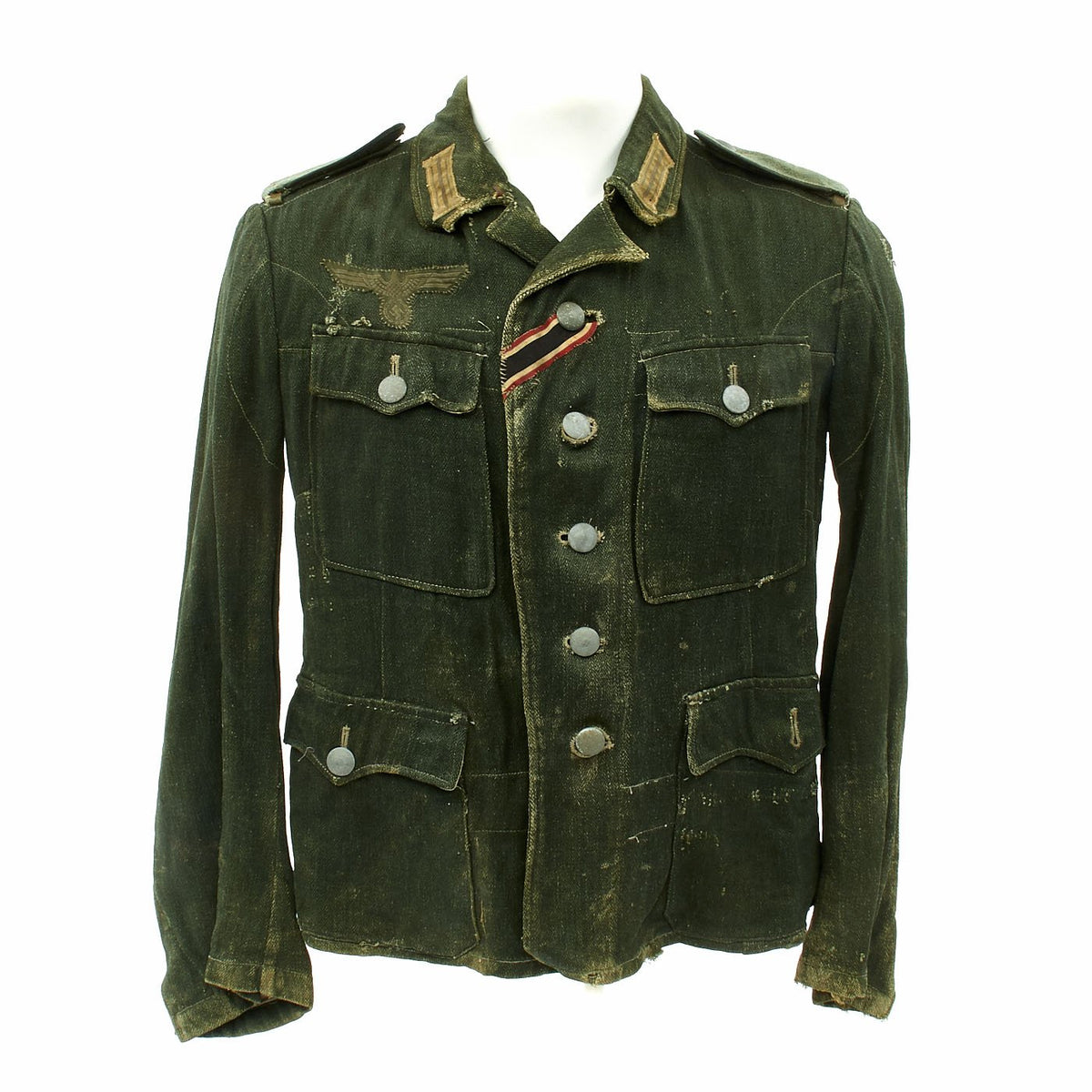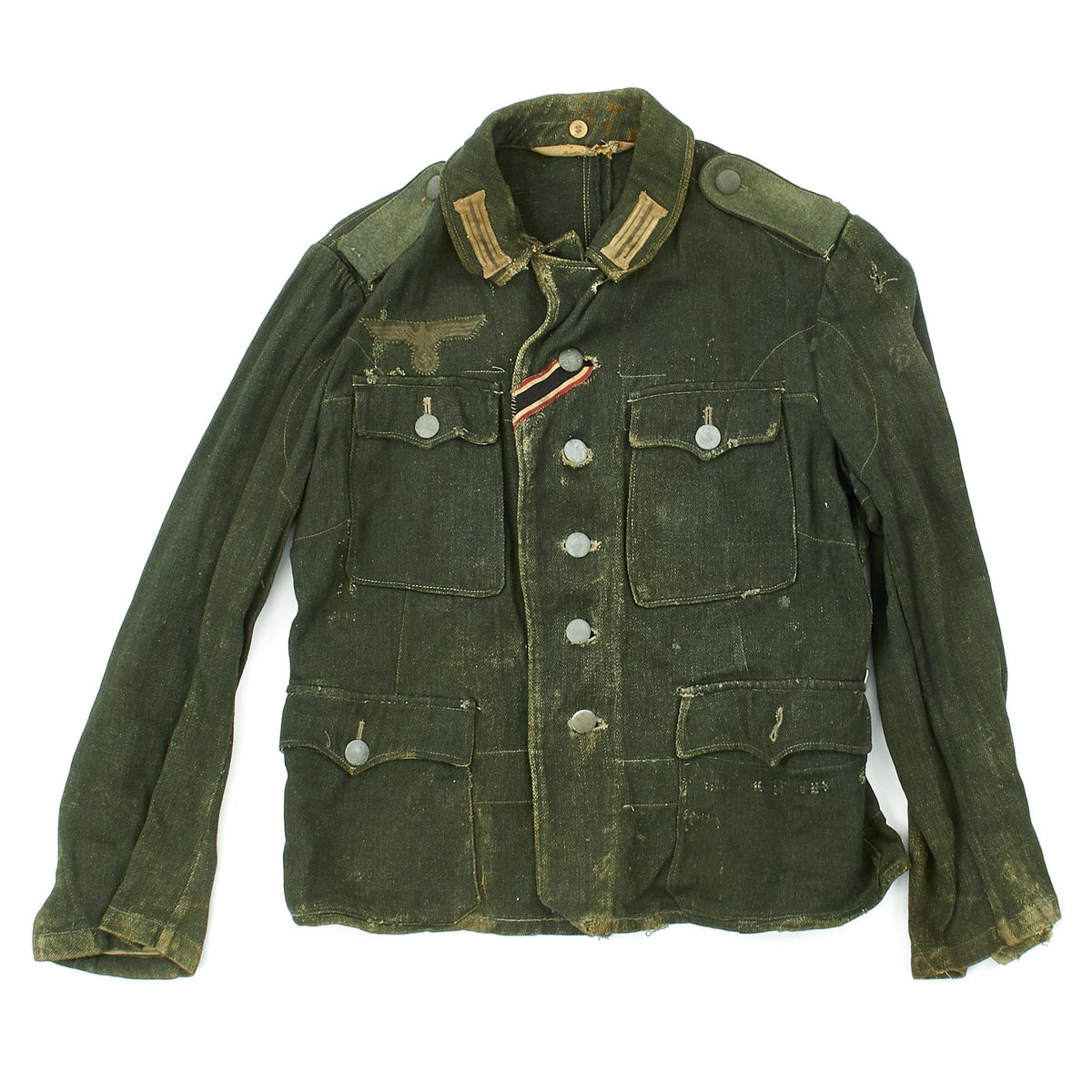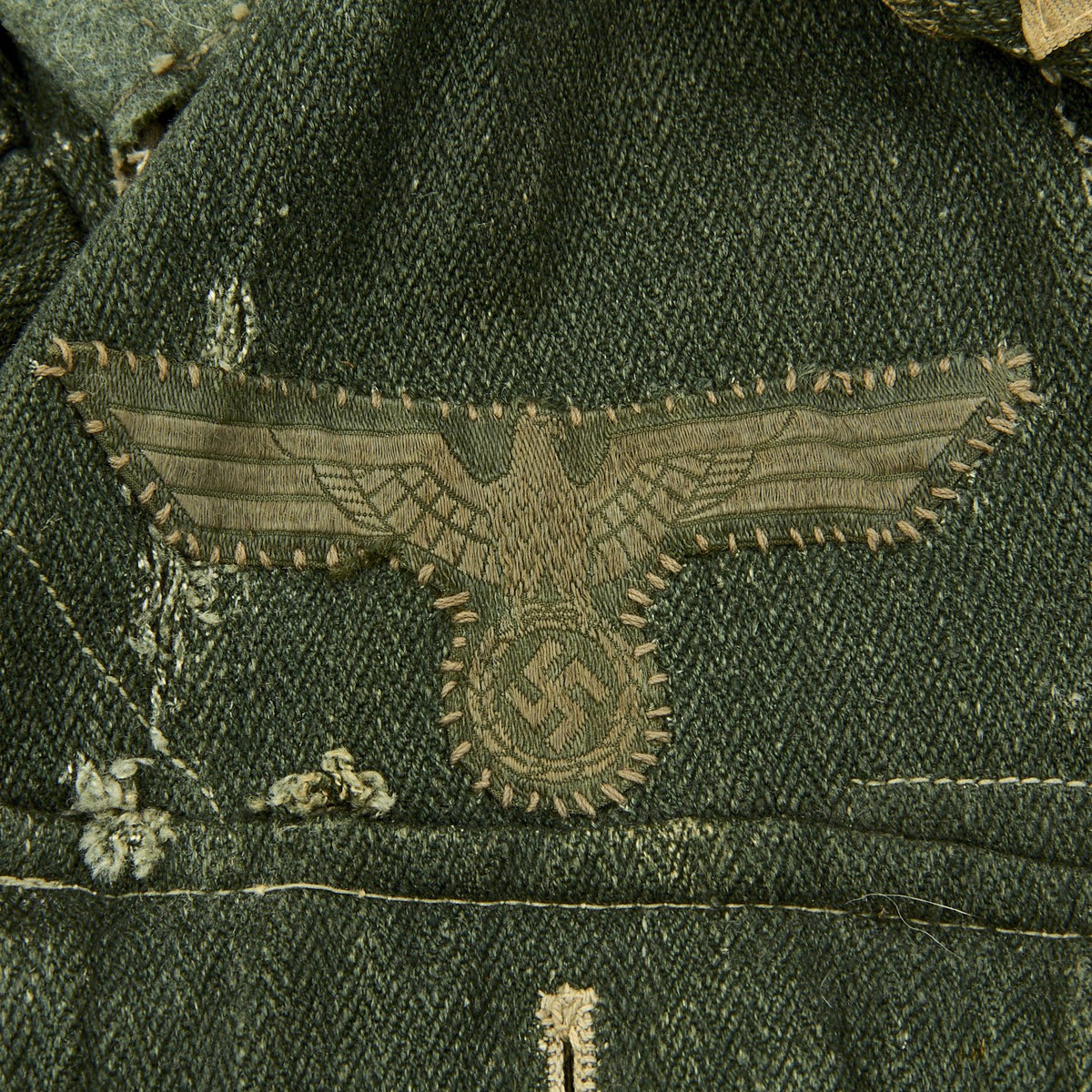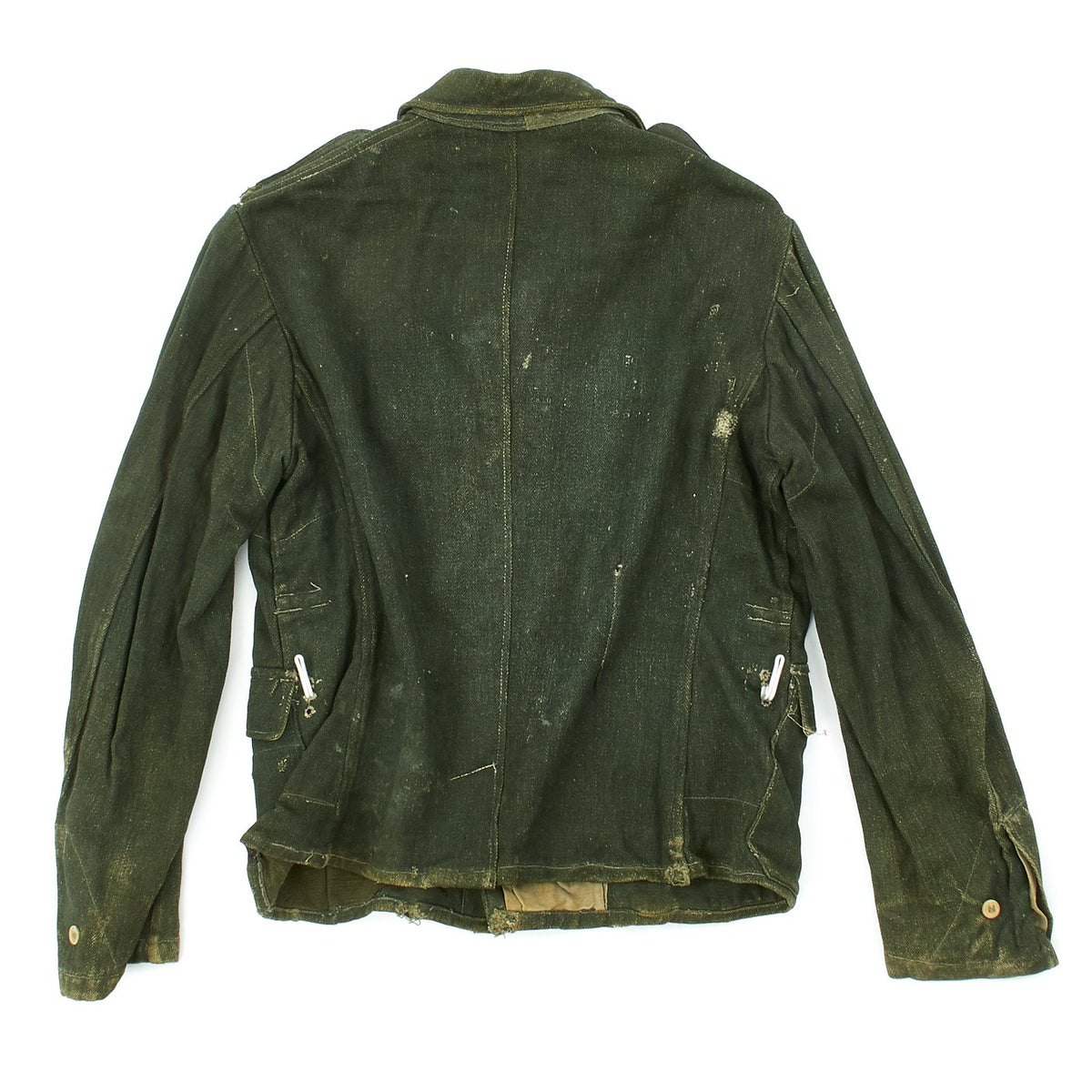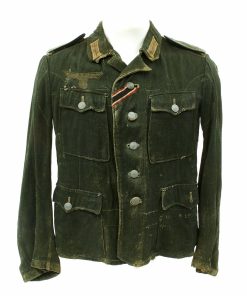Original German WWII M42 Army Herringbone Twill Soldat Battle Tunic Original Items
$ 795,00 $ 238,50
Original Item: Only One Available. This is a used condition totally genuine German WWII Heer Infantry Model 1942 HBT (Herringbone Twill) Soldat (Private) Battle Tunic or Summer Tunic complete with BeVo Breast Eagle. Iron Cross 2nd Class Medal Ribbon, shoulder boards, collar rank insignia, belt hooks, and original buttons. Size is approximately 38″ chest. Overall condition is good and clearly shows it was used in the field of battle.
M42 HBT Tunic sometimes refereed to as the Summer Tunic or Combat Shirt, features four non-pleated scalloped pockets, internal pocket, internal support tabs, two aluminum belt hooks, lining in friction areas, internal collar buttons and a hang loop. Constructed of green cotton Herring Bone Twill and finely stitched with white thread.
The M40 uniform was the first design change in the standard army uniform. It differed from the M36 only in the substitution of feldgrau for the bottle green collar and shoulder straps, which began to be phased out in 1938/39, though most combat examples show this variation appearing in 1940, hence the unofficial M40 pattern. The troops liked the older green collars, and M40 (and later) tunics modified with salvaged M36 collars or bottle-green collar overlays are not uncommon.
The M42 is essentially an M40/41 tunic, but with pleats removed from all the pockets to save on materials and production time.
Most recruits previous to 1940 were issued a fatigue uniform (Drillichanzug) for basic training which they kept for work details, weapons cleaning and other duties likely to soil clothes. This was an unlined, insignia-less uniform made of linen or cotton herringbone twill (HBT) that typically had two buttonless patch pockets on the skirt; enlisted versions had a standing collar while NCO and officer versions had rise-and-fall collars. The fatigue uniform originally was undyed and therefore a colour that ranged from white to oatmeal to cement grey. On 12 February 1940 the colour was ordered changed to a bluish green called “reed-green.”
Since the heavy wool feldgrau uniform proved to be oppressively hot in summer weather, especially in southerly latitudes, soldiers took to wearing their lightweight green fatigue uniforms in the heat. In about 1942 the Army regularized the practice: depots began issuing an official hot-weather four-pocket field uniform of feldbluse cut but made of the same reed-green HBT material. For the enlisted Heer, these were usually worn with collar insignia and national eagle. NCOs would typically wear the summer uniform (Sommerfeldanzug) with appropriate rank on their shoulder boards, but the collar braid seen on the wool uniforms was typically absent. Two models were approved for use in the Army, the first that was designed after the M40 feldbluse and a later model that removed the front pocket pleats and pocket flap scallops similar to the M43. From 1943 a double-breasted version based on the Panzerjacke was made for vehicle and assault gun crews. SS units never had an official unique summer uniform, and while some used the Army versions, most used the earlier dyed work fatigues without insignia. While commissioned officers did have bespoke summer uniforms made, there was no regulation summer field uniform.
Fast Shipping with Professional Packaging
Thanks to our longstanding association with UPS FedEx DHL, and other major international carriers, we are able to provide a range of shipping options. Our warehouse staff is expertly trained and will wrap your products according to our exact and precise specifications. Prior to shipping, your goods will be thoroughly examined and securely secured. We ship to thousands clients each day across multiple countries. This shows how we're dedicated to be the largest retailer on the internet. Warehouses and distribution centres can be located throughout Europe as well as the USA.
Note: Orders with more than one item will be assigned a processing date depending on the item.
Before shipping before shipping, we'll conduct a thorough inspection of the items you have ordered. Today, the majority of orders will be delivered within 48 hours. The delivery time will be between 3-7 days.
Returns
The stock is dynamic and we cannot completely manage it because multiple stakeholders are involved, including our factory and warehouse. So the actual stock may alter at any time. It's possible that you may not receive your order once the order has been made.
Our policy is valid for a period of 30 days. If you don't receive the product within 30 days, we are not able to issue a refund or an exchange.
You can only return an item if it is unused and in the same state as the day you received it. You must have the item in its original packaging.
Related products
Uncategorized
Uncategorized
Uncategorized
Uncategorized
Uncategorized
Uncategorized
Uncategorized
Uncategorized
Uncategorized
Armoured Fighting Vehicles of the World: AFVs of World War One (Hardcover Book) New Made Items
Uncategorized
Band of Brothers ORIGINAL GERMAN WWII Le. F.H. 18 10.5cm ARTILLERY PIECE Original Items
Uncategorized
Australian WWII Owen MK1 Machine Carbine SMG Custom Fabricated Replica with Sling Original Items
Uncategorized
Uncategorized
Uncategorized
Uncategorized
Uncategorized
Uncategorized
Uncategorized
Armored Burgonet Helmet & Polearm from Scottish Castle Leith Hall Circa 1700 Original Items
